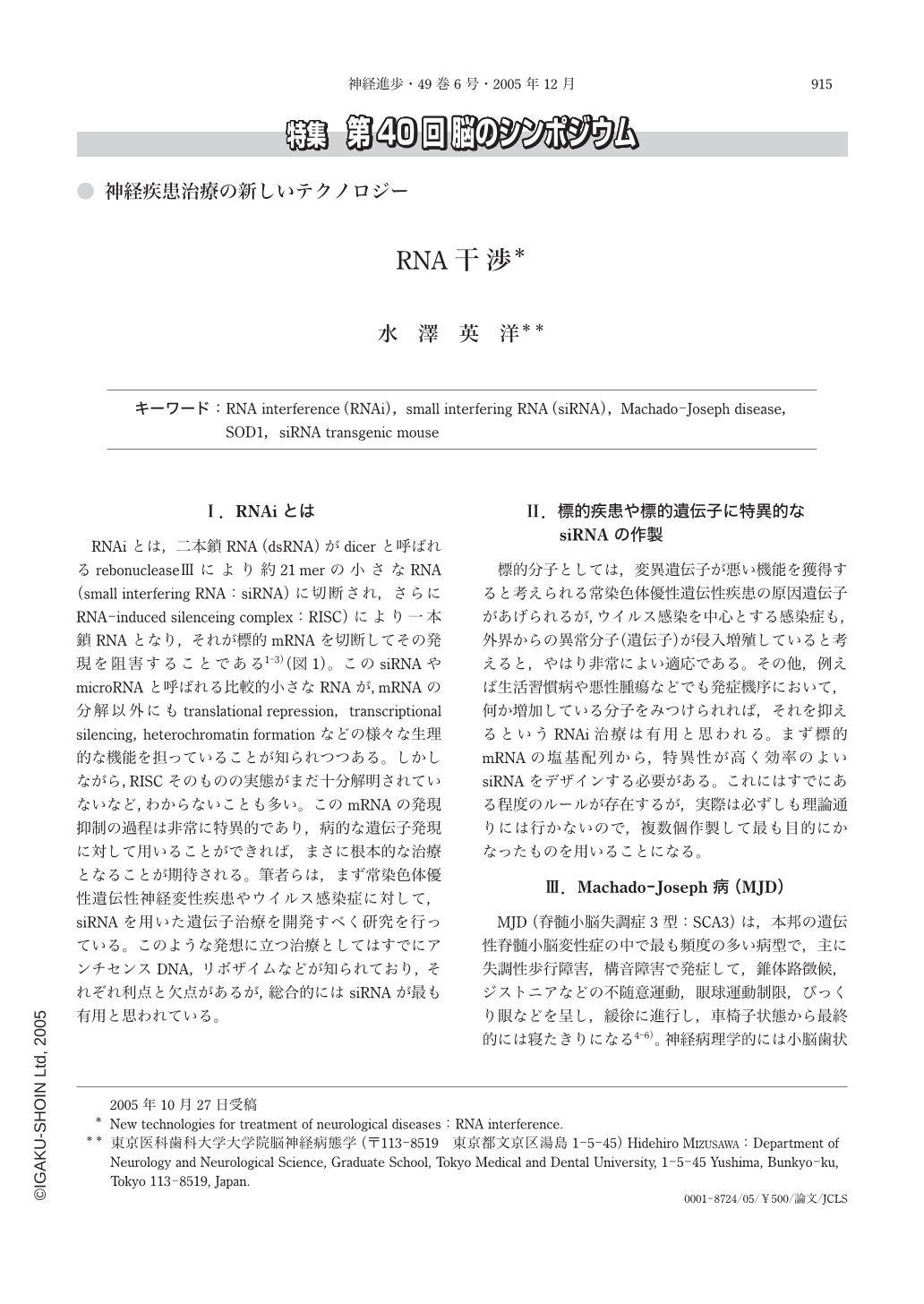Japanese
English
- 有料閲覧
- Abstract 文献概要
- 1ページ目 Look Inside
RNAiとは,二本鎖RNA(dsRNA)がdicerと呼ばれるrebonucleaseⅢにより約21merの小さなRNA(small interfering RNA:siRNA)に切断され,さらにRNA-induced silenceing complex:RISC)により一本鎖RNAとなり,それが標的mRNAを切断してその発現を阻害することである1-3)(図1)。このsiRNAやmicroRNAと呼ばれる比較的小さなRNAが,mRNAの分解以外にもtranslational repression,transcriptional silencing,heterochromatin formationなどの様々な生理的な機能を担っていることが知られつつある。しかしながら,RISCそのものの実態がまだ十分解明されていないなど,わからないことも多い。このmRNAの発現抑制の過程は非常に特異的であり,病的な遺伝子発現に対して用いることができれば,まさに根本的な治療となることが期待される。筆者らは,まず常染色体優性遺伝性神経変性疾患やウイルス感染症に対して,siRNAを用いた遺伝子治療を開発すべく研究を行っている。このような発想に立つ治療としてはすでにアンチセンスDNA,リボザイムなどが知られており,それぞれ利点と欠点があるが,総合的にはsiRNAが最も有用と思われている。
RNA interference(RNAi)is a process whereby small noncoding RNAs silence specific genes. It is important to realize that dsRNAs shorter than 30 base pairs(small interfering RNA:siRNA)could be used to trigger an RNAi response in mammals. Using the RNAi machinery, it would be possible to suppress the expression of genes which cause many intractable neurological diseases. We have been studying to develop gene therapies for neurological diseases using siRNA. First, we have successfully developed specific siRNAs for many neurological diseases including spinocerebellar ataxias and amyotrophic lateral sclerosis. Sporadic diseases such as Alzheimer's disease and cerebral infarction with arteriosclerosis could also be targets of siRNA therapy. SiRNA transgenic mouse was produced and its crossing with SOD1G93A transgenic mouse revealed almost complete suppression of the onset of ALS in the SOD1G93A and siRNA double transgenic animals. In addition to neurological diseases, there have been reported many studies on siRNA gene therapies for viral infections, cancers and so on. Vectors such as adenovirus, adeno-associated virus, and liposome have been developed and improved resulting in sufficient suppression of endogenous genes. The next problem is the delivery of siRNAs. We have succeeded to suppress a function of the brain endothelial cells by the hydrodynamic method. Further studies are necessary to deliver siRNA into the brain parenchyma across the blood brain barrier and to address many questions regarding specificity, efficacy, and safety of siRNA therapy in vivo.

Copyright © 2005, Igaku-Shoin Ltd. All rights reserved.


